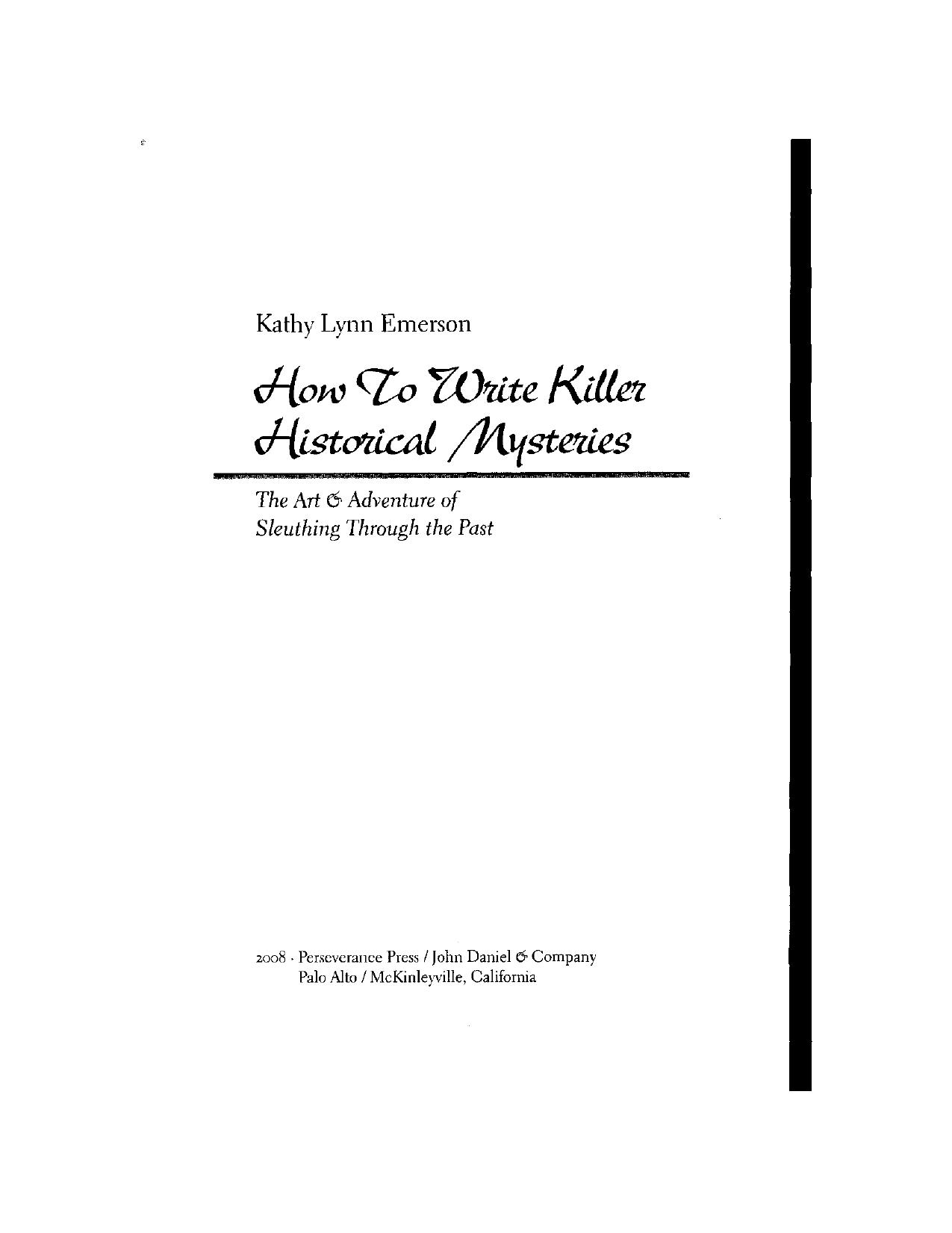How to Write Killer Historical Mysteries by Kathy Lynn Emerson

Author:Kathy Lynn Emerson [Emerson, Kathy Lynn]
Language: eng
Format: epub, pdf
Published: 2011-04-27T07:00:00+00:00
At the final revision stage, I usually drive myself crazy with details — not just playing with word choices and trying to cut down on repetitious words, but also searching for things I know I read somewhere and now can't find.
Did I do things in Face Down Upon an Herbal that I now wish I could change? Of course. Jennet, Lady Appleton's maid, provides comic relief in the first book. She appears in only in one chapter in this one. My failure to use her more left me struggling to keep Herbal from getting too dark. And I should have done more research on ferrets. They were popular pets in the sixteenth century, as evidenced by their appearance in at least one portrait of a gentlewoman. I used Wheelwright's ferret, Bede, as a device to reveal something about his character, but overlooked Bede's potential as an interesting character in his own right.
Were there any bloopers? Yes, at least one. After the novel was published I got hold of a copy of Phillis Cunnington's Costumes of Household Servants from the Middle Ages to 1900. According to this book, written by a renowned expert on historical clothing, head coverings were worn indoors by most people in the sixteenth century—except by liveried servants. Gilbert, while serving in Lord Madderly's household, should not have been wearing a hat indoors. I not only gave him one, I had Catherine call attention to it.
Miscellaneous Statistics
After having written ten Face Down books and four Diana Spaulding Mysteries, my "system" for writing a historical mystery is fairly well established. I spend several weeks beforehand on research—plus years before that. I don't know how long that would take if I were starting from scratch.
A look at my daybooks for the period when I was working on another of the Face Downs does give some idea of how long it took me to pull that particular book together. I spent parts of five days planning, spread out over a month, then puttered with the first chapter on one day in one week and on two days during the next—all the while, of course, while working on other projects. Once I really got into the book, however, I spent an average of three to five hours a day, five to seven days a week, on that one project.
After about three weeks, I had roughed out the first ten of forty-two chapters and had notes for Eleven through Fourteen. At that point I went back to the beginning and made changes. A week later I had once again reached Chapter Eleven. Two weeks after that I had eighteen chapters and started revising at Chapter One for the second time. Nine days later I was back at Chapter Eighteen and could start to rough out Chapters Nineteen through Thirty-nine. Two weeks later, it was back to Chapter One again, but this time I kept going through to the end of the rough draft. That took a little more than two weeks and I ended up with a 271-page manuscript.
Download
How to Write Killer Historical Mysteries by Kathy Lynn Emerson.pdf
This site does not store any files on its server. We only index and link to content provided by other sites. Please contact the content providers to delete copyright contents if any and email us, we'll remove relevant links or contents immediately.
Autoboyography by Christina Lauren(4678)
Asking the Right Questions: A Guide to Critical Thinking by M. Neil Browne & Stuart M. Keeley(4576)
Dialogue by Robert McKee(3582)
Eat That Frog! by Brian Tracy(3514)
Sticky Fingers by Joe Hagan(3454)
Journeys Out of the Body by Robert Monroe(2984)
Elements of Style 2017 by Richard De A'Morelli(2944)
Annapurna by Maurice Herzog(2839)
Schaum's Quick Guide to Writing Great Short Stories by Margaret Lucke(2804)
Full Circle by Michael Palin(2771)
The Diviners by Libba Bray(2444)
The Art of Dramatic Writing: Its Basis in the Creative Interpretation of Human Motives by Egri Lajos(2413)
The Mental Game of Writing: How to Overcome Obstacles, Stay Creative and Productive, and Free Your Mind for Success by James Scott Bell(2393)
Why I Write by George Orwell(2359)
Atlas Obscura by Joshua Foer(2350)
In Patagonia by Bruce Chatwin(2269)
The Fight by Norman Mailer(2159)
The Elements of Style by William Strunk and E. B. White(2077)
Venice by Jan Morris(2051)
